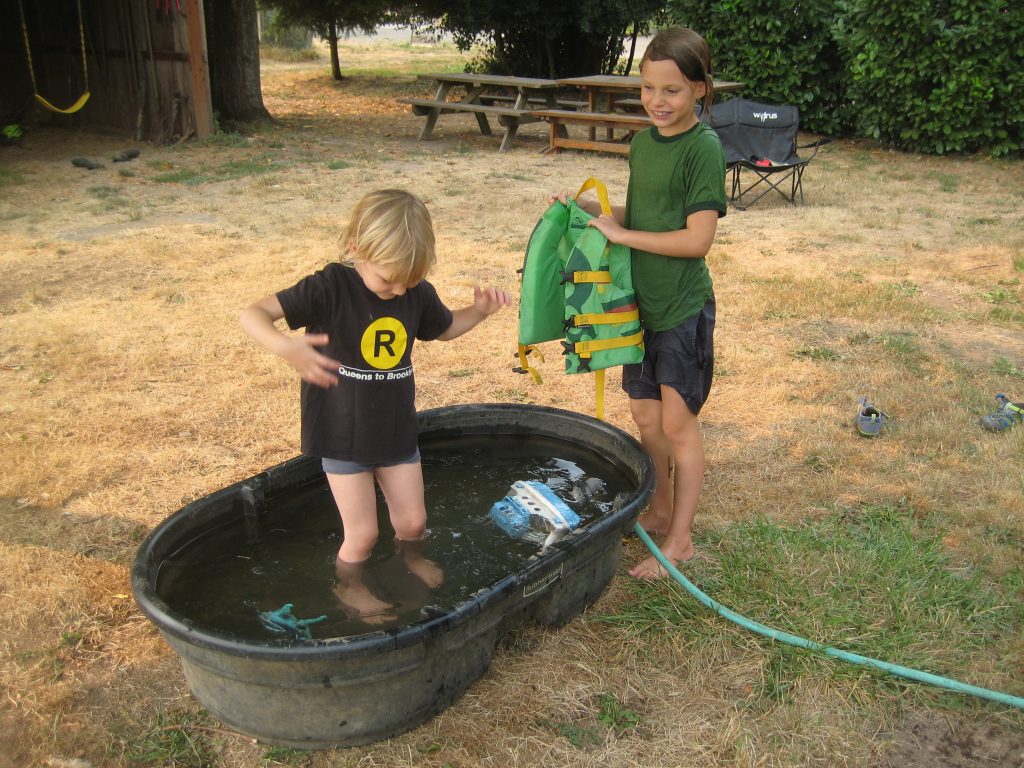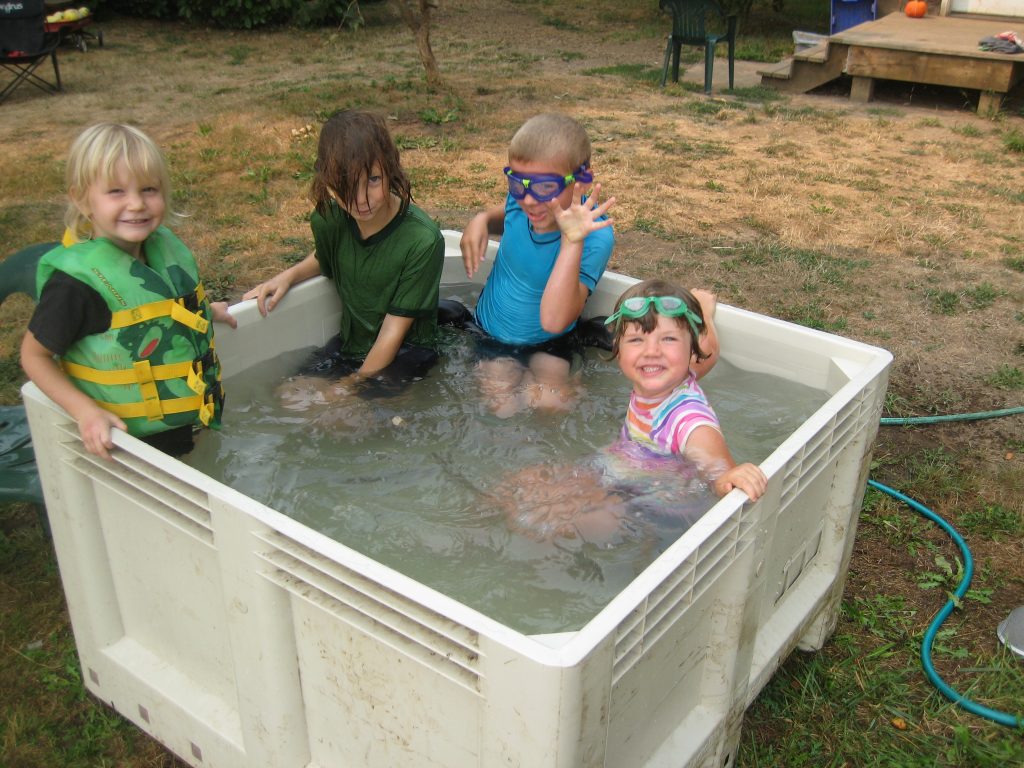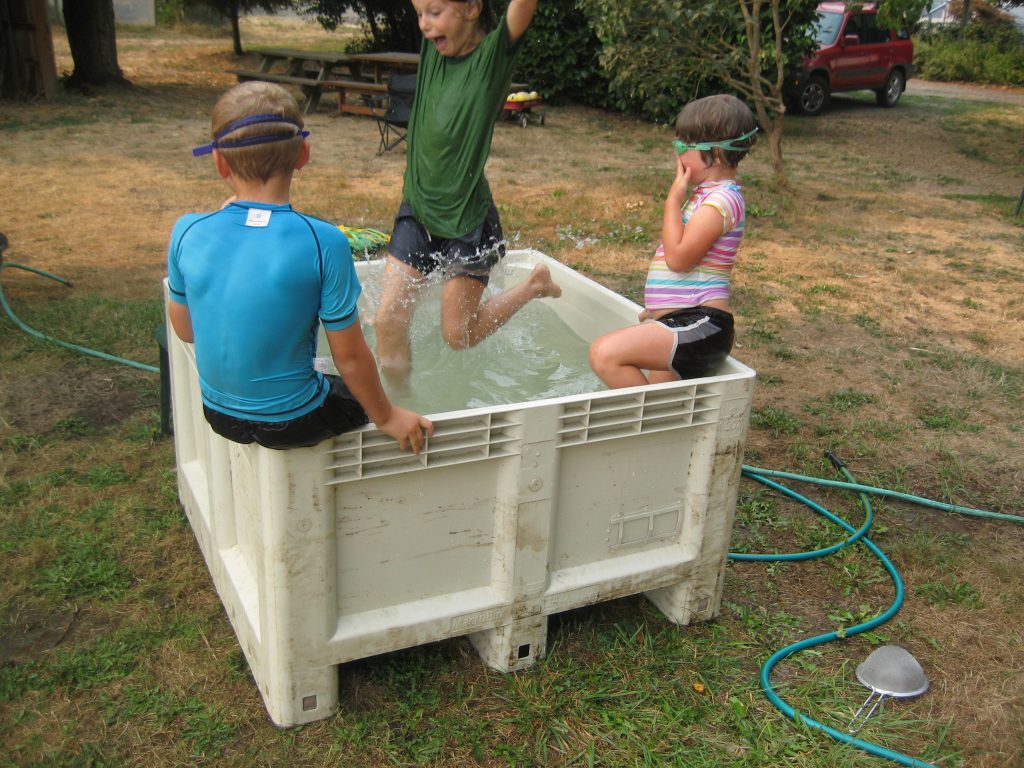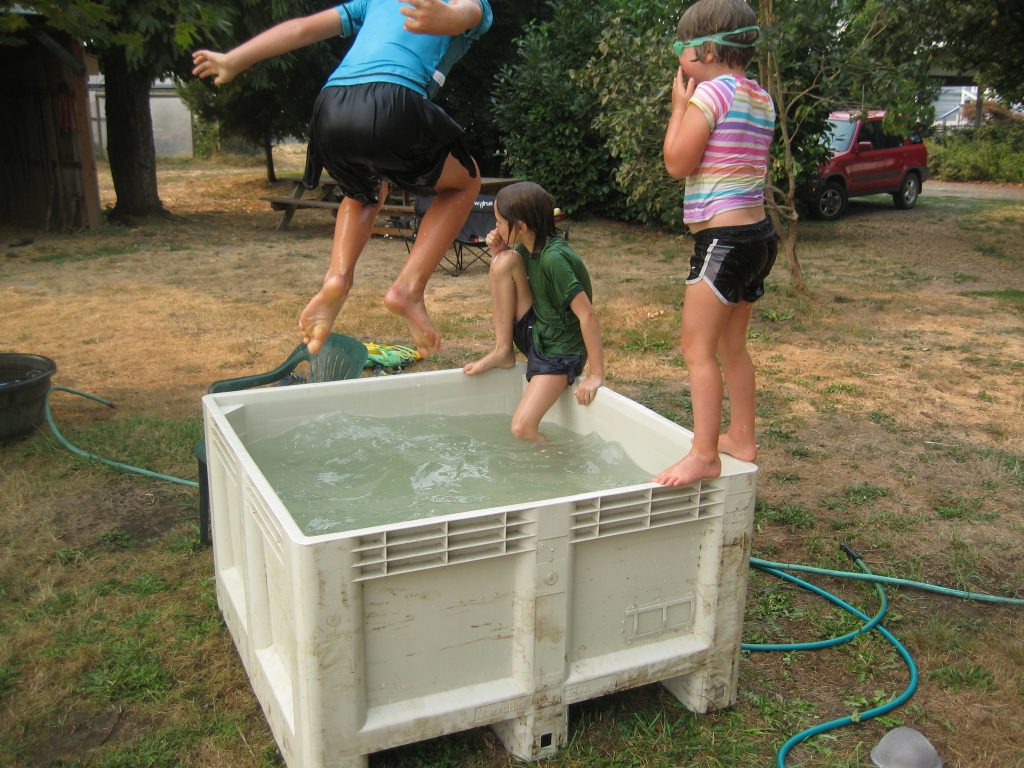
Photo from the farm archive: January 2008, our newly remodeled outdoor wash station, ready to go for the start of our third season. (It’s since been remodeled and moved several more times!)
Do you know one of the secrets to having really great, fresh produce for customers? Cooling the harvest as quickly as possible.
When vegetables and fruit are in the field, they are the same temperature as the air. This seems obvious when you think about it, but it’s not obvious in a world where most people buy produce at a store and then put it almost directly into a fridge. That “cold chain” from field to fridge has been carefully built and maintained for customers by farmers (and transporters and retailers in the case of grocery store produce). But, first the produce is often times hot because it doesn’t start in the cold chain. It starts growing on the ground out in our fields, where summer temperatures can rise above 100°. We avoid picking tender vegetables like lettuce during the hottest part of the day, but even in the morning during a heat wave it can be 80° in our fields. Which means that the lettuce is 80° when we pick it. Just think of how quickly lettuce would wilt on your counter at 80° (or hotter)! That’s the same thing that could happen in our fields if we were not careful to bring food into the wash station as quickly as possible and then cool it off as quickly as possible.
And, how do we cool it off? Not by sticking it directly into our walk-in cooler. That would take too long, and the lettuce packed into bins would hold their heat for a long while, making for wilted or lower quality lettuce. Every minute that lettuce is left warm after cutting reduces its shelf-life and quality for our eaters.
The key is to dunk it as soon as possible in very cold, clean water (which serves the double purpose of cleaning the lettuce as well). This process is called “hydro-cooling” and it is very fast and effective. Our clean well water thankfully comes out quite cold, so we are able to use it for this purpose. Since the beginning of the farm, our favorite vessel for hydro-cooling produce has been re-purposed bathtubs lifted up off the ground (so we don’t have to bend as far — see the farm archive photo of an old wash station above). They work great — a bathtub can hold enough lettuce at a time that we can easily hydro-cool a whole batch of lettuce (or other crop) in a quick and efficient manner before packing it to clean bins and putting it into our cooler, where the lettuce will continue cooling to 34°. Our cooler will hold the produce at that temperature until it is time to take it to our customers.
So, we use a bathtub, designed for bathing humans, to hydro-cool our produce. But we’ve found that us humans also benefit “hydro-cooling” on hot days as well. Really, there’s nothing better at the end of a long summer day than dipping into cold water. It offers immediate refreshment beyond what walking into a cool space could do. And, what kind of vessel might work well for the human body? I suppose we could set up an outdoor bathtub for ourselves as well, but somehow we’ve never made that choice.
Instead, we use agricultural containers! This smaller one is a sturdy animal trough, leftover from our livestock days but long since turned into a wading/cooling pool for our whole family. It’s about a million times sturdier than any wading pool you’ll ever meet (and cost quite a lot more too, but we’re happy to not have to throw away “trash” at the end of every season because of punctured cheap wading pools).

Two of the kids’ friends enjoying our little “wading” trough. It’s just big enough for a full grown adult to dunk backward into for full immersion, but safe enough for young kids to splash around in too!
And, just this weekend we added a new deeper bin to our hydro-cooling options:
This is a “macro-bin,” a plastic agricultural tote often used locally for harvesting and transporting wine grapes. We bought ours for storing apples over the winter in our cooler, but it’s temporarily out of the cooler and filled with cold water for dunking, jumping, splashing, and all kinds of summer fun!
(Casey does want me to note that of course the macro-bin will be thoroughly scrubbed, washed, and sanitized before the fall’s apple harvest! Which it would have needed to be after storing last year’s harvest all winter anyway.)
So, apparently on our farm, we hydro-cool the produce in human tubs and the people in farming tubs. As long as it works, I guess why not?
And, as hot as it has been this week, we know the heat’s days are numbered. Certainly, we will still have warm days in the coming fall days, but they will be spread out more and more between days like today that start out cool and cloudy. We can really feel all the signs of summer winding down out here on the farm: yellow jackets prowling the ground for fallen fruit or meat scraps, brown dry grass everywhere, wagons full of winter squash from the kids’ garden … September is around the corner!
Enjoy this week’s vegetables!
Your farmers, Katie & Casey Kulla
~ ~ ~
Meet this week’s vegetables:
- Chehalis apples
- Brooks plums — These are one of those classic uniquely Oregon fruits — big, meaty prune-style plums that are great for eating fresh or for drying. I will always remember eating a ton of these right after Dottie’s birth (she turns five on Monday!). It was the first year they’d produced more than a handful of fruit, and little two year-old Rusty and I would make a daily “outing” of picking plums in the orchard (which is maybe 100 ft. from our house?). It certainly felt adventurous with a new baby in tow! Plus, they were delicious and we couldn’t stop eating them!
- Red plums
- Sweet peppers — One thing we have learned over the years is that when our “sweet” varieties of peppers begin to color up, they are sweet indeed! They do not have to be 100% colored in order to taste great. We’re now picking red peppers, and they are fabulous!
- Tomatoes
- Eggplant
- Cucumbers
- Green peppers
- Salad mix
- Spaghetti squash
- Carrots
- Zucchini
- Garlic





